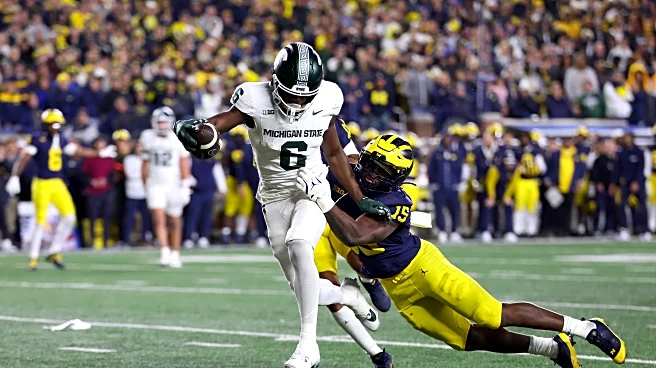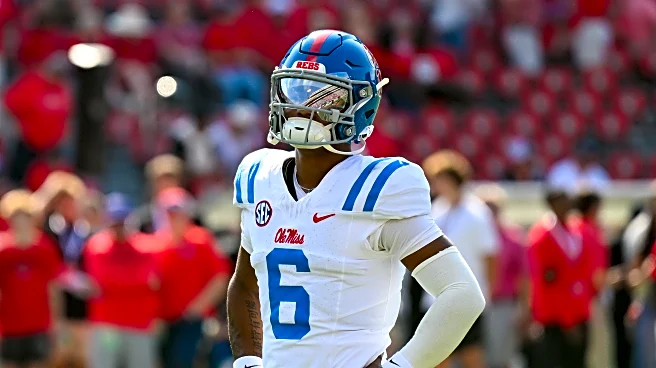What's Happening?
Procter & Gamble (P&G) has reported better-than-expected financial results for its fiscal first quarter, driven by strong performance in its beauty and grooming categories. The Cincinnati-based company achieved a 2 percent organic revenue growth, surpassing
analyst expectations. This growth was primarily attributed to increased sales and volume in beauty and grooming, which offset weaker performances in other segments like baby, feminine, and family care. P&G's strategy of marketing its products as premium and superior appears to be resonating with consumers, as evidenced by the company's advertising success with products like Tide detergent. Despite a 9.2 percent decline in P&G's stock this year, shares rose by about 2 percent in premarket trading following the announcement.
Why It's Important?
The strong performance in P&G's beauty and grooming sectors highlights consumer resilience and the effectiveness of the company's premium pricing strategy. This success is significant as it suggests that consumers are willing to pay more for perceived quality, even amid broader economic pressures. The results also indicate that P&G's strategic focus on high-margin categories is paying off, potentially setting a precedent for other consumer goods companies. However, the company's decision to cut 15 percent of its corporate workforce and review its brand portfolio underscores ongoing efforts to improve efficiency and adapt to market conditions. These moves could have implications for the company's long-term growth and competitive positioning.
What's Next?
P&G plans to continue its restructuring efforts, which include workforce reductions and potential brand divestitures. The company is also bringing on a new CEO, which may lead to further strategic shifts. Additionally, P&G has adjusted its expectations for the impact of tariffs and commodity prices, now anticipating a $400 million after-tax impact, down from $800 million. These changes suggest a more optimistic outlook for the company's cost management. As P&G navigates these transitions, stakeholders will be watching closely to see how these strategies affect its market performance and shareholder value.
















